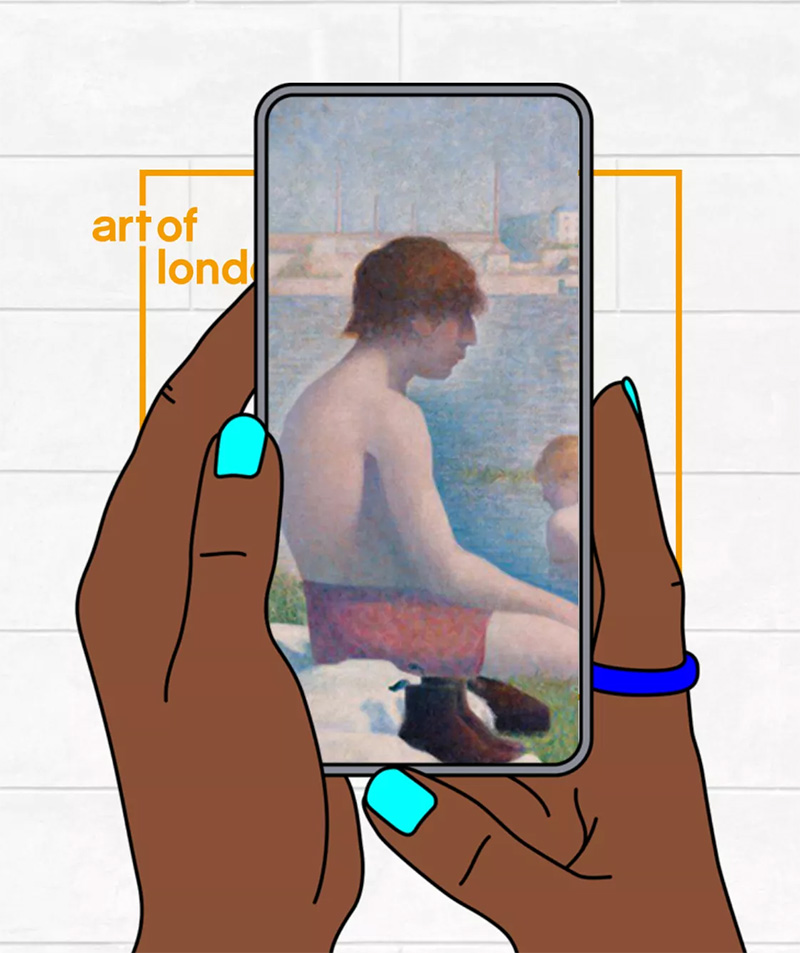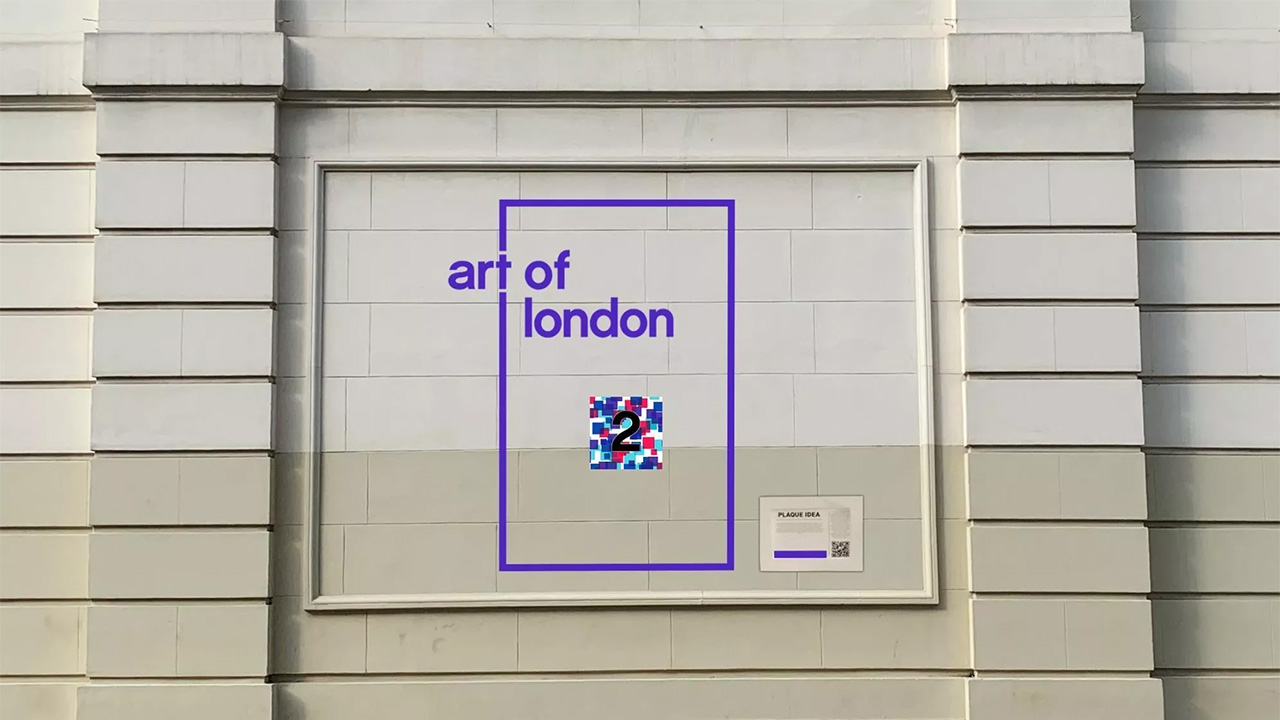From today until July 1, all of London’s West End’s a gallery. Want a glimpse of Seurat’s “Bathers at Asnieres”? Make your way down Jermyn Street. Turn the corner and in Piccadilly Circus, you’ll discover Tracey Emin’s acrylic work “Trying to Find You 1.” A portrait of Noël Coward by Clemence Dane is fittingly situated by the Noël Coward Theatre on St. Martin’s Lane, not far from Albert Charles Challen’s celebrated portrait of Mary Seacole at Cecil Court.
All of it is just an app away — specifically, the Augmented Gallery mobile app, an augmented reality (AR) project spearheaded by the Art of London cultural initiative. With it, users can access a walking trail from Trafalgar Square to Green Park dotted with 20 “plaques” or key locations. By scanning QR codes at those sites, they unlock classic and contemporary artworks from the National Gallery, National Portrait Gallery, Royal Academy of Arts, and Sky Arts Portrait Artist of the Year. Viewable through AR, the paintings also come accompanied by audio commentaries featuring the galleries’ curators.
Why it matters

“Bathers at Asnieres” by Georges Seurat from the National Gallery collection. Image: Art of London
Not for the first time in our pandemic era has AR been called upon to reach viewers beyond museum walls. From The Met Unframed to Norton Art+, the highly accessible technology has been central in encouraging interactivity and immersion despite socially distancing measures. It’s also set to pave the way for future cultural engagement as audiences emerge from lockdowns more digitally acclimatized and eager for unique art experiences.
Such projects are the products of an increasing number of partnerships between cultural institutions and technology companies: LACMA and Snapchat’s team-up recently produced Monumental Perspectives, not long after teamLab and TikTok collaborated for Art With Rinkan Sauna. For Augmented Gallery, Art of London tapped Playlines, a London-based XR design studio whose AR prototyping grew out of a 2020 residency at the National Gallery.
Accordingly, the company’s grasp of how AR and art intersect has been well-honed. “Over the last year we’ve had a chance to test out augmented reality tools for arts and culture audiences,” Muki Kulhan, Executive Producer of Playlines, told MuseumNext. “The response we’ve had from these users was extremely positive and showed that people are more comfortable than ever using their own devices to engage with AR experiences.”
This latest AR app joins the past year’s other UK-based initiatives, including the London Design Museum’s Supermarket installation, and Acute Art and Dazed’s Unreal City, that have shrewdly and creatively made routes around the country’s lockdown restrictions to bring art to audiences. Much like its predecessors, Augmented Gallery deploys innovation (AR) and collaboration (between its three headlining institutions) to present what Art of London calls “the art gallery of the future.” In Kulhan’s words, “We really wanted to make sure that we could provide in-real-world experiences that have AR layered on top of them, bringing culture to the public in a safe and accessible way.”



